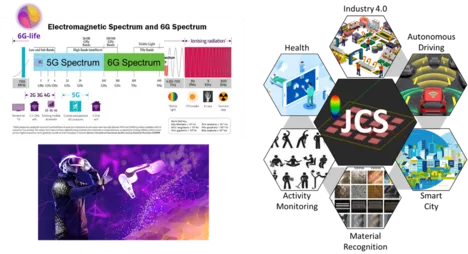PostDoc
Inactive: The user is not active in anymore!Biography
Fabián Seguel, Dr. Ing. (Member, IEEE) received the B.Sc. and M.Sc. degrees in electrical engineering from the Universidad de Santiago de Chile (USACH) in 2013 and 2015, respectively, and the double Ph.D. degree in automatic, signal and image processing (with maximum distinction) from the Université de Lorraine, France and Universidad de Santiago de Chile, Chile in 2020. He held the position of Assistant Professor at the Department of Electrical Engineering, USACH from 2020 to 2022. Currently, he is a Postdoctoral Fellow with the Chair of Media Technology at Technical university of Munich within the 6G-life project working in joint communication and sensing applications. His research interests include indoor positioning, location-based services and signal processing applied to wireless communications.
Research
Joint communication and sensing:
It is expected that the deployment of sixth generation (6G) and beyond wireless networks will provide the necessary wireless communications resources to cope the increasing demand for various novel and high demanding applications, such as, digital twins, extended reality (XR) services (encompassing augmented, mixed, and virtual reality (AR/MR/VR)), tele-presence, tele-operation, smart cities, autonomous driving, and healthcare.
For providing such services and ensure ubiquitous service, wireless networks have increased their presence. In addition to this, to increase the data transmission capabilities, the spectrum usage has moved from traditional short-wave radio bands to mm-waves. Moreover, novel techniques such as multiband carrier transmission and massive Multiple Input Multiple Output (m-MIMO) have increased the granularity of the channel realization and the amount of information that could be obtained from the propagated signal. The adoption of such techniques in 6G networks will unlock the potential for very accurate sensing based on radar-like technology.
Joint sensing and communication refer to the usage of wireless radiofrequency signals to convey not only data transmission, but also to perceive and obtain spatial knowledge of the physical surrounding by processing the reflection of communications signals.
The inclusion of sensing capabilities in a communication network is a very promising area that presents many opportunities and challenges as shown in Figure 1. JCS can be used to improve the performance of the communication network itself, but also there exist plenty of interesting use cases where sensing can be offered as a complementary service to users or develop new applications that are external to the network.
Some of the services that can be provide are: Patient health monitoring, localization and tracking in indoor environments, autonomous navigations in harsh environments, autonomous driving under extreme environmental conditions, traffic monitoring and autonomous driving, material recognition and classification, and human activity recognition among others.
The main goal is to exploit the sensing capabilities of novel wireless technologies to provide different services and applications.
